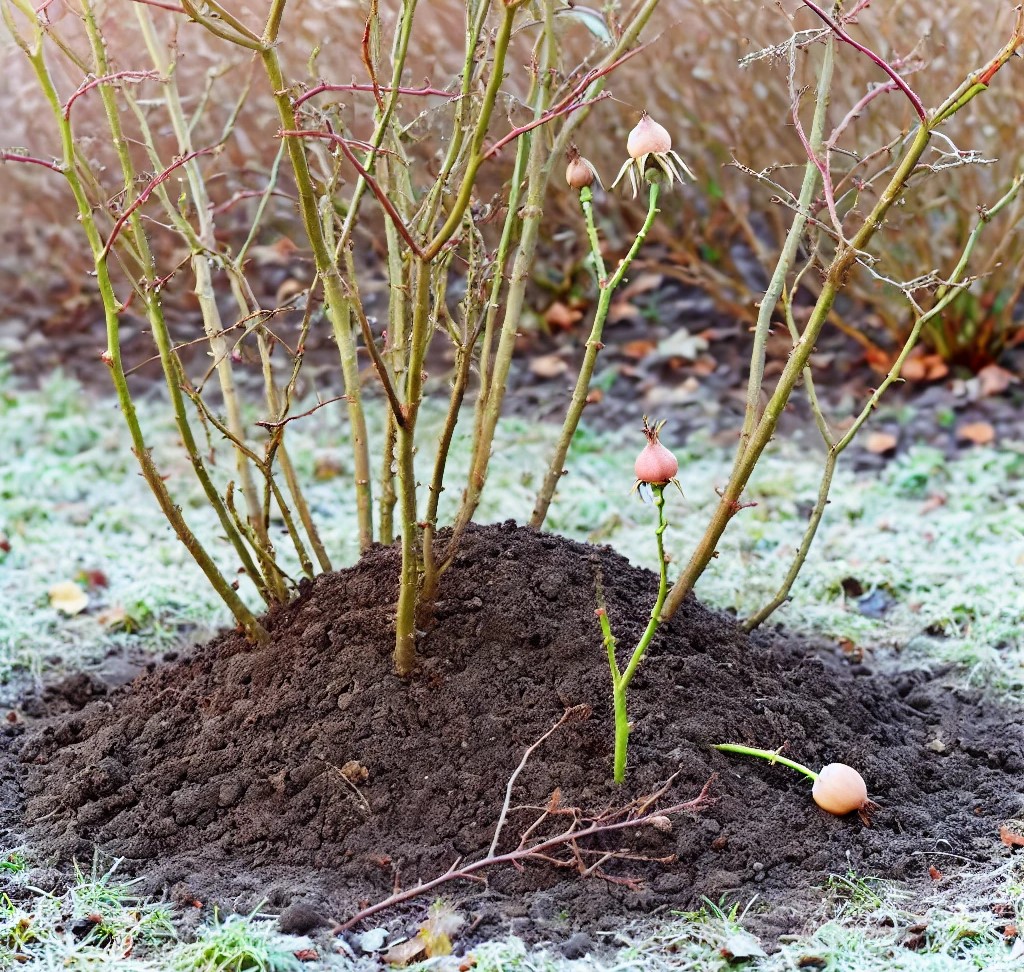Yeah, I know—this sounds like it should be an easy question to answer! But as with so many aspects of gardening, the more you dig into it (pun intended), the more nuanced it becomes. The depth at which you plant a rose crown depends on several factors, like your climate, the type of rose you’re planting, and how you want to manage your garden long-term.
In this article, we’ll unravel the mystery of planting depth—whether you’re wondering “how deep should I plant my rose crown” or trying to figure out if going a little lower (or higher) might make a difference for your roses.
What Is the Crown, and Why Does Its Depth Matter?
The crown of a rose is where the stems meet the roots. For grafted roses, this is also the graft union—the point where the rootstock and flowering variety (scion) are joined. For own-root roses—like the ones I produce here at Fraser Valley Rose Farm—the crown is simply the natural transition point between root and stem.

Planting depth matters because it affects your rose’s stability, health, and ability to thrive in its environment. A crown that’s planted too high might be exposed to environmental stress or even erosion, while one planted too low might struggle with moisture issues or crown rot. Finding the sweet spot is key to long-term success.
Climate: The Biggest Factor in Planting Depth
In warmer or milder climates, roses are typically planted with the crown at or just below soil level. This approach strikes the right balance for healthy growth and minimal maintenance:
- Improved airflow: Roses planted at soil level have better air circulation, which helps prevent fungal issues like crown rot.
- Ease of maintenance: A visible crown makes it easier to monitor for suckers (vigorous shoots emerging from below the graft union) and diseases like bacterial crown gall.
- No need for winter insulation: In regions without harsh winters, there’s no need to bury the crown deeply for protection.

In colder climates, planting the crown deeper—typically 2–4 inches below the soil surface—is a tried-and-true method for ensuring winter survival:
- Winter protection: A deeper planting insulates the crown and graft union from freezing temperatures, protecting the rose from winter damage.
- Supports hilling over: Many gardeners in cold regions mound soil around their roses in fall to shield them from frost. Starting with the crown already slightly buried makes this process simpler and more effective.
- Stability in winter winds: Deeper planting helps anchor the rose, reducing the risk of wind rock, which can loosen roots and stress the plant.
Grafted Roses vs. Own-Root Roses
The type of rose you’re planting also influences how deep—or how high—you should plant the crown.
Own-root roses
Own-root roses don’t have a graft union to worry about, so they’re relatively straightforward. The crown can sit at or just below soil level, regardless of climate. These roses are naturally hardy, don’t produce suckers, and are more forgiving in terms of planting depth.
Grafted roses
Grafted roses need a little more care when it comes to planting depth. In warmer climates, the graft union can sit at or just below soil level, making it easier to monitor for suckers and prevent diseases. In colder climates, however, burying the graft union below the soil provides the essential winter protection that grafted roses need to survive freezing conditions.
Other Factors to Consider
Planting depth isn’t just about climate. Soil conditions, wind exposure, and even erosion play important roles in determining the best depth for your roses:
- Soil drainage: In well-draining soils, planting a little deeper is fine and can help stabilize the rose. However, in heavy clay soils, planting too deeply may lead to waterlogging and increase the risk of crown rot.
- Wind exposure: Roses in windy sites benefit from deeper planting to prevent wind rock, which can damage roots and disturb the crown.
- Erosion: Soil erosion can expose crowns planted at soil level, leaving them vulnerable to stress. Planting the crown slightly below the surface can help counteract this issue over time.
Practical Guidelines for Planting Depth
To summarize:
- In warmer climates, plant the crown at or just below soil level. This allows for proper airflow and easy maintenance.
- In colder climates, bury the crown 2–4 inches below the soil surface to provide winter protection and long-term stability.
- For own-root roses, plant at or just below soil level, as there’s no graft union to worry about.
- For grafted roses in cold zones, make sure the graft union is safely buried to reduce the risk of winter damage.

Conclusion
When it comes to planting the crown of a rose, there’s no one-size-fits-all answer. The “how deep, how high, or how low” question depends on your climate, soil type, and the kind of rose you’re planting. In warm climates, keeping the crown at about soil level ensures good airflow and easy maintenance. In colder regions, planting the crown a bit deeper offers essential winter protection, particularly for grafted roses.
With a little planning and care, you can set your roses up for success—whether you’re planting hardy own-root varieties or grafted beauties that need a little extra TLC. Either way, your roses will reward you with years of gorgeous blooms.






